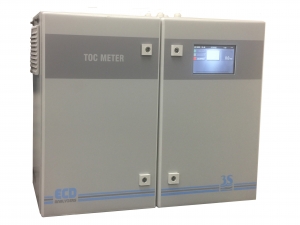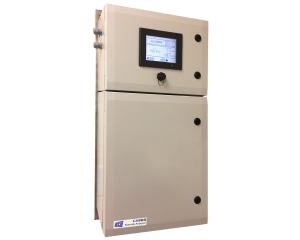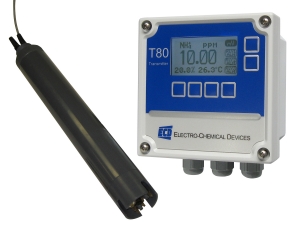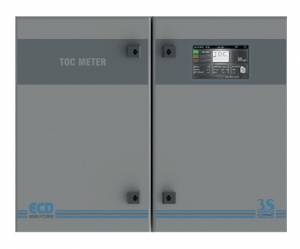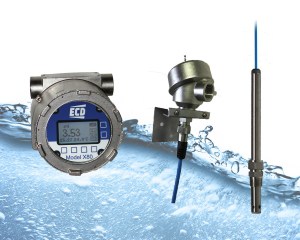Analyzer Plays Important Role in Mine Wastewater Cyanide Treatment
By Josue Nduwa, Development Metallurgist, Oceana Gold, Haile Operation, and Anil Isaac, Applications Engineer, Electro-Chemical Devices, Inc.
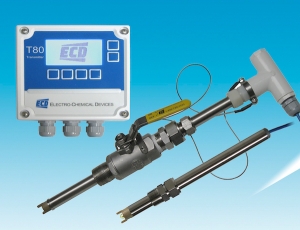 Cyanide (CN) is commonly utilized in multiple industrial processes in the global mining, metals, chemical, electronics, steel, pharmaceutical and other industries. Five processes have been said to account for most of the CN wastewater streams, and they include: refining of gold and other metal ores, metal plating, case hardening of steel, neutralizing of process acid “pickle scum” and scrubbing of stack gases from blast and process industry gas furnaces.
Cyanide (CN) is commonly utilized in multiple industrial processes in the global mining, metals, chemical, electronics, steel, pharmaceutical and other industries. Five processes have been said to account for most of the CN wastewater streams, and they include: refining of gold and other metal ores, metal plating, case hardening of steel, neutralizing of process acid “pickle scum” and scrubbing of stack gases from blast and process industry gas furnaces.
Well-known for its toxic properties, CN is a carefully regulated substance by environmental, health and safety agencies around the globe to protect workers, surrounding communities and local water supplies. When used in the gold mining industry in the form of Sodium Cyanide (NaCN) or Calcium Cyanide (CaCN2), the CN compound of choice is mixed with water in a carefully controlled process. Prior to extraction, the ore is first crushed and treated with the CN solution, which then becomes a flowing slurry during the gold extraction process.
After gold extraction, the residual slurry ore wastewater solution is then transferred and stored for treatment by a mine operator to dissipate the high levels of CN. Due to its toxicity, the wastewater must be treated and evaluated to ensure that the CN level has been reduced to a safe level before discharge as effluent into the water system to prevent water supply contamination that could endanger people or wildlife. The human exposure limits for CN vary by the type and form of CN compound. According to the United States National Institute of Occupational, Safety & Health (NIOSH), the recommended exposure limit (REL) for NaCN is 5mg/m3 (4.7 ppm) over 10 minutes. Toxic exposure symptoms can include eye or skin irritation, asphyxia, lassitude, headache, vomiting, breathing difficulty and death.
For these reasons the global mining industry takes CN process safety and environmental stewardship seriously. Industry CN process safety and environmental protocols are rigidly adhered to by mine management and employees. These protocols include required equipment operation and maintenance procedures.
The Challenge
Global mining company OceanaGold’s Haile Mine operation, which is located in the U.S. state of South Carolina, contacted the applications team at Electro-Chemical Devices (ECD) in Anaheim, California, to discuss its CN wastewater treatment process. The CN analyzers supporting the mine’s wastewater treatment process were requiring unusually high levels of maintenance, which also left open the possibility of inaccurate measurement, which is unacceptable. Gold was discovered in 1827 by Benjamin Haile in South Carolina and his Haile Mine has been in production on and off for nearly 200 years. In fact in the late 19th century, the Haile Mine was the most productive and profitable gold mine east of the Mississippi River. Today, the OceanaGold employees at the Haile Mine are proud of their company history and are deeply committed to safety and the protection of the environment.
According to the U.S. Environmental Protection Agency (EPA), the best available technologies for CN wastewater remediation treatment are: oxidation by chlorine, ion exchange and reverse osmosis. The EPA has established a maximum contaminant level (MCL) of 0.2 mg/L and a maximum contaminant level goal (MCLG) of 0.2 mg/L as free cyanide prior to plant discharge of wastewater. In addition, CN wastewater streams are mobile in soils and have low adsorption to soils with high pH, high carbonate and low clay content. Untreated or ineffectively treated CN wastewater streams can leach to groundwater. Under typical conditions in natural waters (pH less than 9.2), most free cyanide is expected to convert to hydrogen cyanide that is highly volatile. The operations team at the Haile Mine relies on a three-step oxidation process to treat its CN wastewater. CN analyzers are placed at the starting point of the treatment process to measure CN levels entering the primary process, at the secondary treatment process to measure treatment effectiveness, and they are placed at the end-point of the process to ensure treatment has been completed to required effluent levels and meets regulatory requirements prior to discharge.
Should the analyzer report CN levels above the legal limit, the water is returned to the system for additional treatment. Failure to meet the U.S. OSHA and U.S. EPA regulations for the safe use and treatment of CN can result in complex investigations, required actions and fines.
The Solution
The Haile Mine operations team was looking for a highly reliable and accurate CN analyzer solution, which also required a less frequent maintenance schedule. After reviewing the mine team’s operational requirements, the applications engineers at ECD recommended the company’s S80-T80 CN Analyzer System for a number of reasons.
The company’s CN Analyzer Monitoring System is designed with an advanced, precision Pion CN sensor and a smart dual-channel universal transmitter. The Haile Mine plant operations team felt confident that the combination of the highly accurate Pion CN sensor with an intelligent dual-channel transmitter would help them achieve a more cost-effective CN treatment system with reduced maintenance at a lower analyzer lifecycle costs.
The Pion CN electrode is a combination electrode with a silver cyanide/silver sulfide (AgCN/AgS) solid-state pressed crystal sensing element and a double junction reference electrode. The CN ion selective electrode cartridge develops a millivolt potential proportional to the concentration of free CN ions in the measured solution. The typical output is 54mV to 60mV per decade of change in concentration. The speed of the Pion CN sensor’s response varies from a few seconds in concentrated solutions up to a few minutes in the lower ppm ranges. The CN Pion sensors are used with the dual-channel transmitter, which allows mix and match capabilities that could include the measurement of pH, ORP or other parameters for example. This analyzer measures CN from 0.2 ppm to 260 ppm and auto-ranges the display between the ppb and ppm scales.
The CN Pion sensors can be inserted into either immersion or insertion type packages that are designed with a 0.75-inch MNPT compression fitting as the process connection. The Haile Mine plant operations team appreciated the flexibility of this design, which also employs a variable insertion length to accommodate installation in pipe tees, flow cells or through tank walls. The sensor’s retractable configuration is designed with a 1-inch MNPT ball valve, a 1-x-0.75 inch reducer and a 0.75 inch MNPT compression fitting to provide the process connection.
The smart universal transmitter is designed for the continuous measurement of multiple parameters in a general-purpose industrial environment. It communicates with multiple pre- calibrated sensors that measure various parameters and automatically configures the transmitter’s menus and display screens to the measured parameter. With the transmitter’s auto configuration capability to any of the available sensor measurements, the mine operations team no longer needed to maintain an inventory multiple instrument types, saving time and reducing plant operating costs. Technicians at the mine required no special training with the transmitter’s membrane switch navigation. A simple menu structure with soft key menu choices and an easy-to-read 2.75- x-1.5-inch LCD display made the set-up easy. The mine team also like the flexibility of transmitters 4-20 mA output with MODBUS RTU on 24 VDC and 110/220 VAC instruments. The transmitter also can be configured with HART® 7 communications and a three-alarm relay.
Conclusions
The new CN analyzers were installed and operational in less than 30-minutes each with no special technician training or tools. They have been operational now for over __ (years or months) with no issues reported. The mine operations team has recommended the CN analyzer system for use at additional company mines worldwide.

